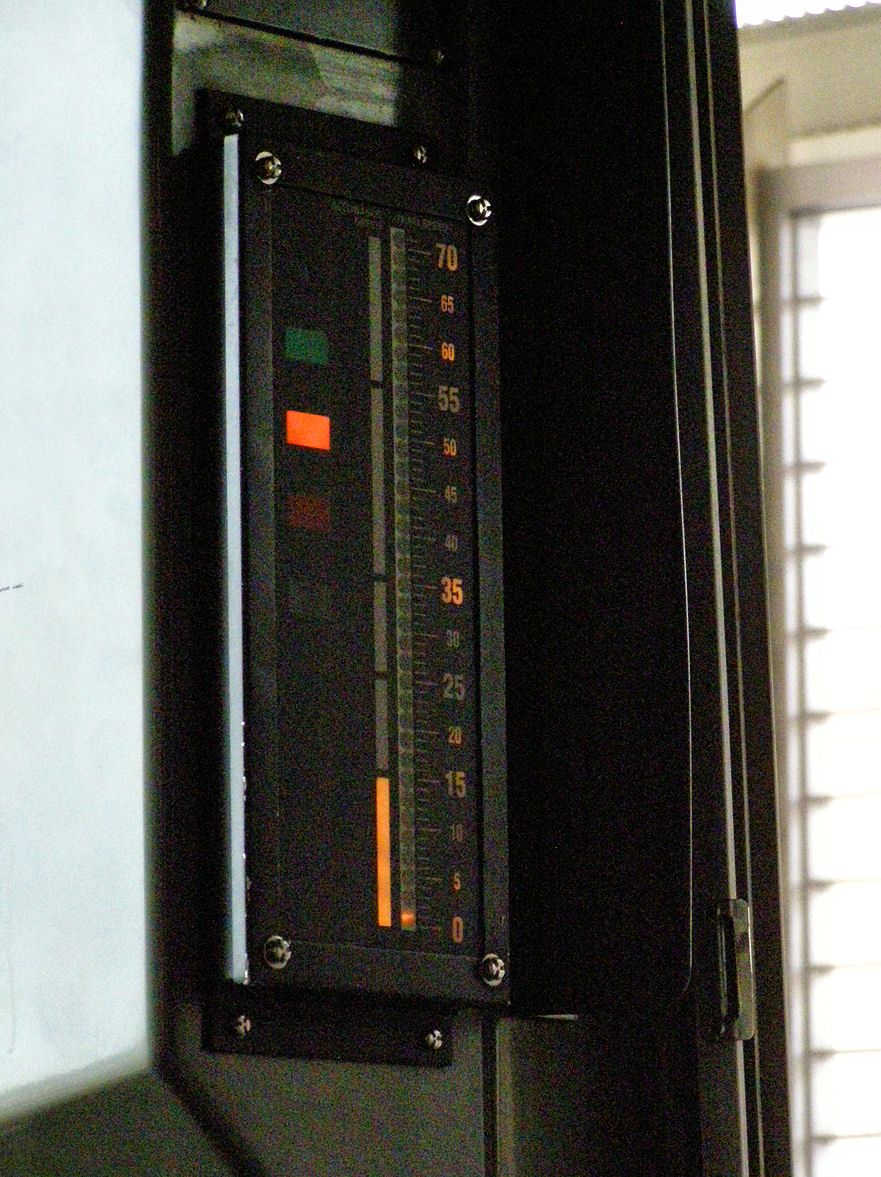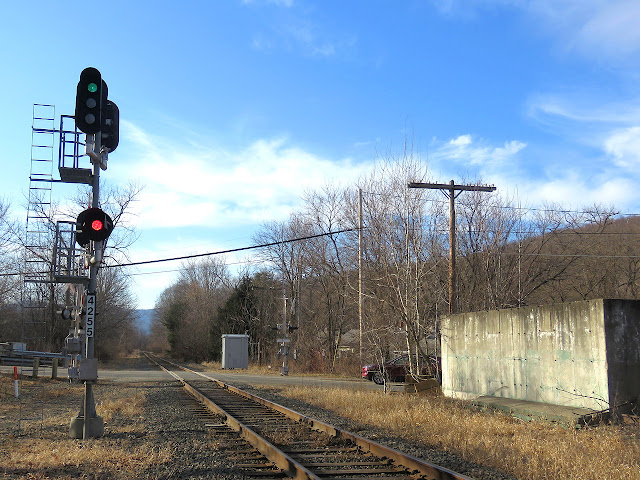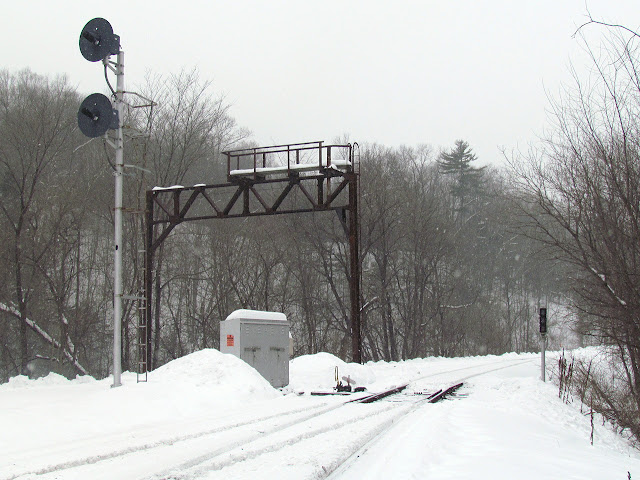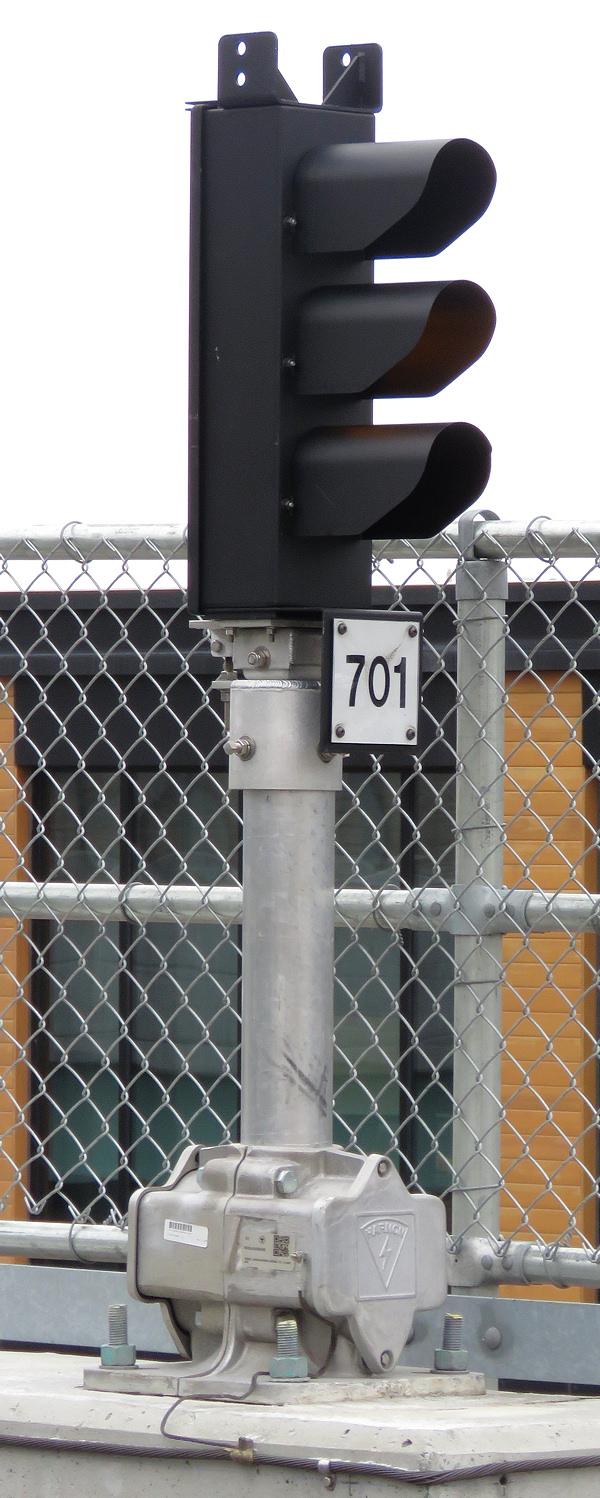For years the western end of the old Boston and Maine main line between the Hoosac Tunnel and Mechanicville, NY has been subjected to a highly inconsistent re-signaling programme by the NS-Guilford joint venture "Pan Am Southern". After a recent visitation and Google Earth survey I believe I have determined the exact disposition of B&M signaling between those two locations.
Starting at the Hoosac Tunnel, both CPF-414 and CPF-415 are retain their B&M signaling with tri-lamp searchlights and pulse-code based block state transmission.
Inside the tunnel both ABS signal locations have had their signal heads replaced by modular square LED color lights, but appear to use the same mounting and relay infrastructure.
At the west end of the tunnel CPF-421 is still searchlit and also features an old school intra-interlocking pole line cable bundle as CPF-421 appears to have been a larger pre-CTC interlocking plant.
CPF-423 at the west end of the North Adams CTC siding was unfortunately re-signaled in 2022. This was part of a protracted re-signaling project that was probably cut short by the CSX purchase of the east end of Guilford and the uncertainty about the long term future of the west end.
The split intermediate signals at mileposts 424 and 425 (numbered 144 and 145) were removed and replaced by a single bi-directional mast at the Ashton Ave crossing near MP 425.44. Signal hardware is branded as GE, which is associated with the Landsay company that seems to have taken over the lines of GE/Harmon. The new 425 intermediate may have been intended to replace the holdout signal at CPF-428 as the westbound direction has a fixed lower red lamp, however someone may have thought better of this between when the signal was installed c. 2017 and when it went into service some 5 years later.
The MP 430 intermediate at the old Taconic racetrack along with the MP 432 intermediate were both replaced by a single new mast around MP 431.
This is where things get strange as the next 4 intermediate signal locations at mileposts 435, 438, 440 and 443, are are still B&M searchlit.
At the CPF-445 junction with the Vermont Rail System, the interlocking has been re-signaled and B&M searchlights have been replaced with Unilens searchlights and a Safetran color light dwarf.
However at CPF-448 in Eagle Bridge, the B&M searchlights and signal bridge were decommissioned in favor of LED color lights around 2017. Because the Guilford rail system's particular tastes the project included a westbound bracket mast although the B&M signal bridge was abandoned in place.
Between Eagle Bridge and CPF-464, all the B&M searchlights were removed around 2017 including locations at mileposts 450, 452, 455, 458 and 462. However CPF-464 remains in a 2-head searchlit configuration.
At the other end of the siding CPF-466 also remains searchlit in a 2-head configuration, however the new holdout signal at CPF-467 consists of LED color light masts. At this point the Guilford main line hits the CP searchlights at CPF-468.
I hope this makes things a little clearer for those looking to explore the area. I am kicking myself for not conducting additional expeditions between 2017 when the new masts appeared between MP 423 and 435. I assumed that by 2018 the route would have been re-signaled and rather than risk a wasted road trip I diverted my attention to the Amtrak Hudson Line. This just goes to show that one should verify signal removals instead of mentally writing them off.
















































